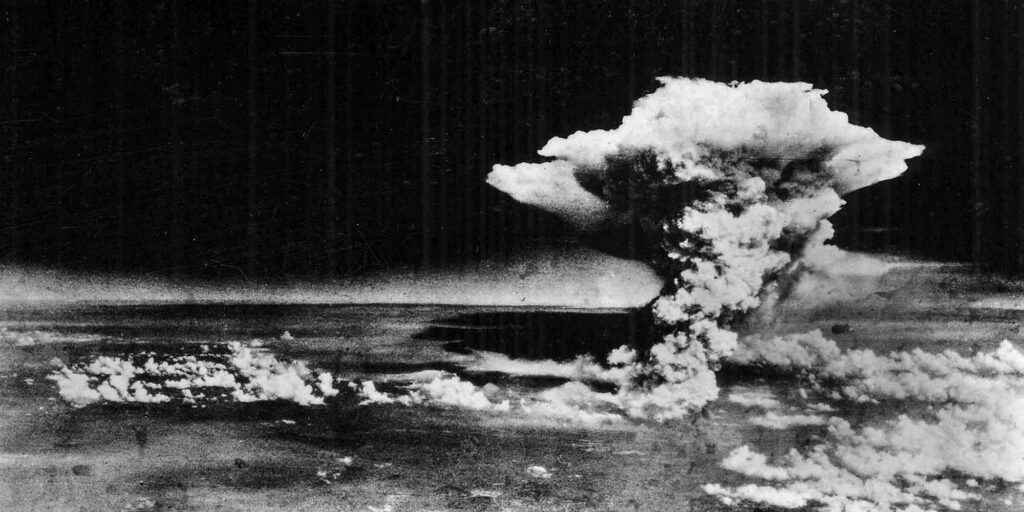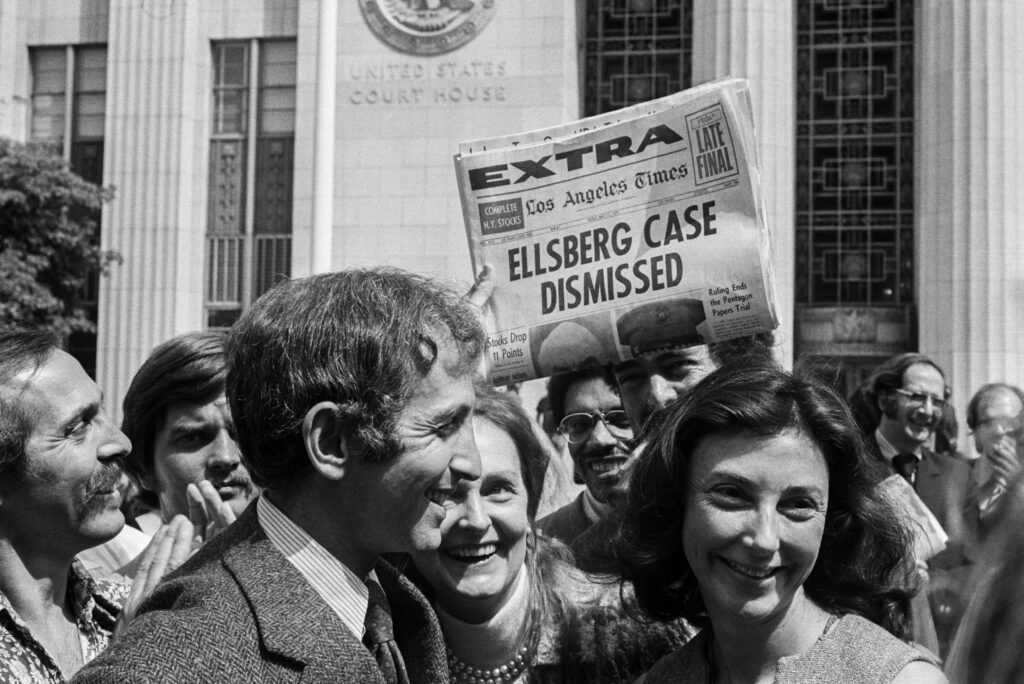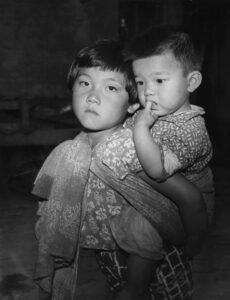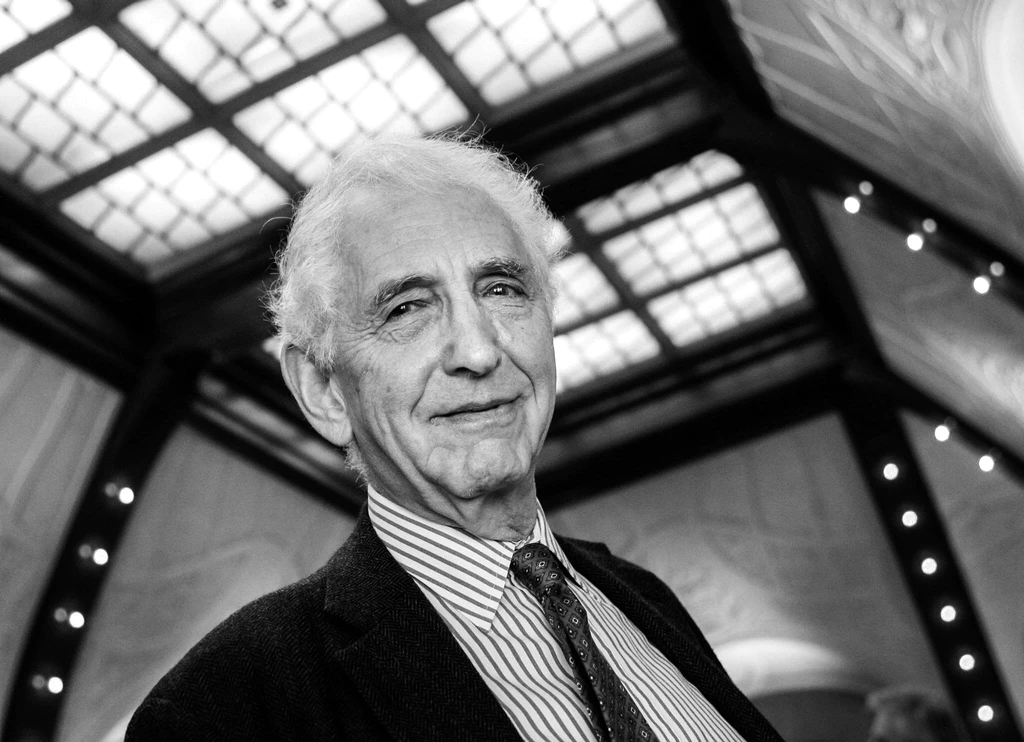Why Daniel Ellsberg Wants the U.S. to Prosecute Him under the Espionage Act
WHISTLEBLOWING - SURVEILLANCE, 14 Jun 2021
Jon Schwarz | The Intercept - TRANSCEND Media Service
In an exclusive interview, Ellsberg explains why he hopes the courts take on the law used to crack down on whistleblowers.

An aerial photograph of Hiroshima, Japan, shortly after the “Little Boy” atomic bomb was dropped on August 6, 1945. Photo: Universal History Archive/UIG via Getty images
1 Jun 2021 – “The whole idea is to kill the bastards,” Gen. Thomas Power, commander of America’s nuclear forces from 1957 to 1963, once said about the use of atomic weapons. “At the end of the war, if there are two Americans and one Russian, we win.”
The hold this nuclear lunacy had on the top of the U.S. government is terrifyingly illuminated in a top-secret study of U.S. war plans newly publicized by famed whistleblower Daniel Ellsberg. The document, produced by the RAND Corporation and copied by Ellsberg at the same time he exfiltrated the Pentagon Papers from RAND, examines the U.S. response to the 1958 Taiwan Strait Crisis. The study’s contents were first reported on May 22 by the New York Times.
The crisis, now completely forgotten, began when China attempted to seize several small islands off its coast from Taiwan. The study shows American generals enthusiastically planning for the use of nuclear weapons against China. It is not simply that the officials looked with equanimity on the possibility of killing millions; rather, many seemed frustrated that there were any delays forced upon them by the rest of the government. If China had not changed course, civilization could have ended then and there.
Ellsberg is now speaking out about the study, he said in a phone interview, for a straightforward reason: “I got scared.” The issues that led to the 1958 crisis between the U.S. and China have never been resolved; both countries are now ramping up confrontational rhetoric; and most importantly, the strategic rationale that led the U.S. to consider nuclear war then remains exactly the same today. “You shouldn’t be confident that the current calculations are any less crazy,” Ellsberg said.
His apprehension about the potential use of nuclear weapons is intimately linked to another of his key concerns: the Justice Department’s accelerating use of the 1917 Espionage Act to prosecute leakers. Its chilling effect on potential whistleblowers makes it less and less likely that Americans will even know what their government is doing, much less be able to do anything about it. Ellsberg hopes his latest revelation will prompt a cultural and perhaps legal reckoning for the Act.
Ellsberg has been profoundly worried about the danger of nuclear war since the 1950s and ’60s, when he worked in various positions at the heart of America’s atomic nomenclatura. In his 2017 book, “The Doomsday Machine,” he describes arranging for a simple question to be sent to the Joint Chiefs of Staff over President John F. Kennedy’s signature: How many people would die if the U.S. carried out its extensive plans for general nuclear war against the Soviet Union and China?The answer came back a week later: about 600 million, or, as Ellsberg puts it, “a hundred Holocausts.”
When Ellsberg was quietly extracting the Pentagon Papers from RAND, he also copied as much material — totaling at least 7,000 pages — about U.S. nuclear policies. Some of his activist friends even believed the nuclear documents were more important than the Vietnam history, and Ellsberg planned to leak them after the Pentagon Papers were published. He gave the nuclear archive to his brother for safekeeping, but his brother hid most of it in a town dump, and a hurricane shifted the dump’s landscape so much that it was impossible to locate. The Taiwan study is one of the comparatively few nuclear papers that survived.
America’s imagination used to be captured by the danger of nuclear war, with dozens of works of fiction portraying how it could happen and what it would mean: “Dr. Strangelove,” “WarGames,” “The Day After.” This in turn led to political pressure on leaders to reduce our nuclear stockpile and ameliorate tensions with our purported enemies.
But this widespread terror of nuclear war evaporated with the end of the Cold War, even as many specialists have come to believe that the actual danger remains and, in fact, is growing. The Bulletin of the Atomic Scientists has set its Doomsday Clock at 100 seconds to midnight, the closest it’s been since its creation in 1947. Even former Secretaries of State George Shultz and Henry Kissinger, former Secretary of Defense William J. Perry, and former Sen. Sam Nunn of Georgia — none known for being wild-eyed radicals — have together repeatedly warned about the heightened risk of nuclear war and urged world leaders to abolish the weapons.
For his part, Ellsberg points out that we now know the Pentagon’s calculation of 600 million dead in nuclear war was likely a grave underestimate. The smoke from hundreds of burning cities would block out the sun for years, causing famine that would kill almost every human on Earth.
The 1958 Taiwan Strait Crisis was rooted in China’s civil war over the preceding decades. After the Chinese Communists won and founded the People’s Republic of China in 1949, the Nationalists fled to Taiwan. The People’s Republic did not accept that Taiwan was a legitimate, separate country and certainly did not accept that it owned the small island of Quemoy and the Matsu archipelago. This had an understandable logic, given that Quemoy and Matsu are right on the coast of mainland China, about 100 miles from Taiwan.
The People’s Republic shelled Quemoy and Matsu in August 1958, declaring that it was “determined to liberate” them. The Ellsberg document examines in detail the enthusiastic planning for nuclear war this set off at the top levels of the U.S. government.
The chair of the Joint Chiefs of Staff, Gen. Nathan F. Twining, “made it clear that [to stop the Chinese attack] the United States would have to use nuclear weapons against Chinese air bases,” beginning with, according to the study, “low-yield ten to fifteen kiloton nuclear weapons.” This “low-yield” characterization is in the eye of the beholder; Little Boy, the bomb dropped on Hiroshima, was 15 kilotons.
The study also reports that Twining said if the People’s Republic did not retreat, the U.S. “would have to conduct nuclear strikes deep into China.” This would “almost certainly involve nuclear retaliation against Taiwan and possibly against Okinawa, but he stressed that if national policy is to defend the Offshore Island then the consequences had to be accepted.” (The U.S. assumption was that this retaliation would come from the Soviets, given that China had not yet developed its own nuclear weapons.)
Adm. Arleigh Burke, chief of naval operations, tried to quell the disappointment of Adm. Harry Felt, the commander in chief of Pacific Command, that President Dwight Eisenhower might not give them the go-ahead to go nuclear immediately. But “he assured Felt that the Joint Chiefs of Staff would continue to press for the use of atomic weapons on Chinese Communist local air fields from the outset of hostilities.” Burke was especially worried that the administration would not allow them to use nukes unless Taiwan itself was attacked, something that “Burke evaluated as not sound but nevertheless persuasive to top officials.” Burke also believed that while foreigners might complain about America using nuclear weapons, “leaders of other countries would soon realize that it was in their interests.”
Gen. Lawrence S. Kuter, the top Air Force officer for the Pacific Command, felt the same. “U.S. air action,” he said, according to the RAND document, “had no chance unless atomic weapons were used from the outlet.” To defend Quemoy and Matsu “without discretionary use of nuclear weapons would be costly and probably ineffective. Less forceful alternatives in the long run would prove disastrous.” (Kuter did express the perspective that perhaps the U.S. simply should not go to war over the islands.)
Gen. Maxwell D. Taylor, the Army chief of staff, was the most dovish of this crew, holding the belief that the U.S. and Taiwan might be able to beat back China’s military with conventional weapons. Nevertheless, he believed, “it would be necessary to use nuclear weapons” if he were wrong.
What possible reason would the U.S. have to start a nuclear war in defense of this collection of tiny islands almost 7,000 miles away from the U.S. west coast?
The answer is perhaps the most significant aspect of the leaked study. John Foster Dulles, Eisenhower’s secretary of state, is paraphrased explaining it as clearly as possible.
At one meeting with the military, “Dulles repeated the point he had made at a previous meeting that if we shrank from using nuclear weapons when military circumstances required, we would have to reconsider our whole defense posture.”
The great majority of the officers agreed. The U.S. had made commitments to allies around the world that it would defend them. But, Twining said, America “could not afford the sort of forces” necessary to do this with conventional arms. Dulles chimed in that the U.S. could never be a “match for the manpower and conventional power of the Communist enemies on the Eurasian land mass.”
In other words, we could only defend our valiant allies if we were constantly willing to use nuclear weapons. Of course, one person’s valiant allies across the globe are another’s network of vassal states constituting a planetary empire. Either way, if our allies saw that we weren’t willing to use nuclear weapons to let Taiwan keep worthless islands that shouldn’t belong to them anyway, they’d all wander off on their own, making independent decisions about their interests.
Or as Dulles put it, “Nothing seems worth a world war until you looked at the effect of not standing up to each challenge posed.” What was this effect? According to Burke, the U.S. “must be prepared to use nuclear weapons. Otherwise we would lose the whole world within three years.”
All of this is completely logical, if you start from the premise that America must run everything. It is also, as Ellsberg puts it, “criminal and insane.”
Ellsberg’s concern today is that we are headed toward a similar confrontation, with the same underlying calculations, as in 1958. For 70 years, the China-Taiwan split has been papered over with kludgey ambiguity. China had declared that there is only one China — the People’s Republic — and Taiwan still belongs to it. Most of the rest of the world is willing to go along and pretend Taiwan is not an independent country. This includes the U.S., which declared in 1979 that the People’s Republic is “the sole legal Government of China” and has maintained that policy ever since.
But now Taiwan’s government may, with encouragement from the U.S. right and little pushback from President Joe Biden, do what it never has before: formally declare independence. According to China’s ministry of defense, “Taiwan independence means war.”
No one knows how far either China or the U.S. would go over this issue. But what was said in the study of the 1958 crisis remains true today: “[N]uclear weapons would be necessary if the United States had to defend Taiwan.” And many in the U.S. foreign policy establishment will still argue that if we’re not willing to go that far, we would lose the whole world.
Meanwhile, Ellsberg has more on his agenda. The RAND report was originally classified “top secret.” An unclassified version, with large swaths removed, was released in 1975. Ellsberg copied the top-secret version, and it’s the sections redacted 46 years ago that he is drawing attention to today.
A historian at George Washington University filed a Freedom of Information Act decades ago in an attempt to get these parts of the report declassified. But the Pentagon responded that they couldn’t find the original study. Thus, Ellsberg is leaking material that may remain top secret, and the New York Times has published it.
Now Ellsberg, who recently turned 90, is calling on the U.S. government to prosecute him under the 1917 Espionage Act.
“What I’ve done is the same as what [drone whistleblower] Daniel Hale [was prosecuted] for,” says Ellsberg. “Daniel Hale’s stuff was not higher than Top Secret.” Hale pleaded guilty to one count under the Espionage Act after, according to the Justice Department, leaking 11 documents “marked as Top Secret or Secret.” He is currently awaiting sentencing.
Moreover, Ellsberg points out, “Julian Assange has been indicted” for conspiracy to obtain and disclose material that “Chelsea Manning gave him and that was nothing higher than Secret. … I want to say as clearly as I can to them, this is what you’ve been indicting people for.”
The government, Ellsberg plausibly believes, “is not anxious” to prosecute him. But he hopes to force the issue, in an attempt to bring the case to the Supreme Court and have the Espionage Act declared unconstitutional — a long-held goal of First Amendment advocates. The Act is “truly draconian,” says Trevor Timm, executive director of the Freedom of the Press Foundation, “and it denies those charged under it any opportunity to defend themselves in front of a jury. The fact that Ellsberg is willing to put himself on the line to protest this unjust and overbroad statute is nothing short of heroic.”
This is indeed an unusual endeavor for someone entering his tenth decade. But it is characteristic of Ellsberg. In “The Doomsday Machine,” he writes about holding in his hand one of the government estimates of hundreds of millions dying in a nuclear inferno. “I thought, This piece of paper should not exist. … It depicted evil beyond any human project ever. There should be nothing on earth, nothing real, that it referred to.”
But it is real. Gen. Thomas Power, the nuclear czar, had a different reaction when he was presented with a similar estimate of mass death if the U.S. followed its plan to bomb the Soviet Union and China. What if the war didn’t actually involve China? Could the military change things up?
Power responded unhappily: “We can, but I hope nobody thinks of it, because it would really screw up the plan.”
Ellsberg’s leak of the Pentagon Papers helped end the Vietnam War. Since then, he’s devoted decades of activism to raising awareness of the danger of nuclear weapons, helping us understand people like Power, the systems in which they thrive, and how humans are absolutely capable of deluding ourselves into extinction. The 1958 study and his attempt to face down the Espionage Act are significant additions to his work, and everyone who’d like human civilization to continue should pay attention.
________________________________________
Daniel Ellsberg is a former US military analyst who in 1971 leaked the Pentagon Papers, which revealed how the US public had been misled about the Vietnam War.
Tags: Assange, Big Brother, Daniel Ellsberg, Exposé, Investigative Journalism, Media, Peace Journalism, Pentagon Papers, Whistleblowing
DISCLAIMER: The statements, views and opinions expressed in pieces republished here are solely those of the authors and do not necessarily represent those of TMS. In accordance with title 17 U.S.C. section 107, this material is distributed without profit to those who have expressed a prior interest in receiving the included information for research and educational purposes. TMS has no affiliation whatsoever with the originator of this article nor is TMS endorsed or sponsored by the originator. “GO TO ORIGINAL” links are provided as a convenience to our readers and allow for verification of authenticity. However, as originating pages are often updated by their originating host sites, the versions posted may not match the versions our readers view when clicking the “GO TO ORIGINAL” links. This site contains copyrighted material the use of which has not always been specifically authorized by the copyright owner. We are making such material available in our efforts to advance understanding of environmental, political, human rights, economic, democracy, scientific, and social justice issues, etc. We believe this constitutes a ‘fair use’ of any such copyrighted material as provided for in section 107 of the US Copyright Law. In accordance with Title 17 U.S.C. Section 107, the material on this site is distributed without profit to those who have expressed a prior interest in receiving the included information for research and educational purposes. For more information go to: http://www.law.cornell.edu/uscode/17/107.shtml. If you wish to use copyrighted material from this site for purposes of your own that go beyond ‘fair use’, you must obtain permission from the copyright owner.
One Response to “Why Daniel Ellsberg Wants the U.S. to Prosecute Him under the Espionage Act”
Read more
Click here to go to the current weekly digest or pick another article:
WHISTLEBLOWING - SURVEILLANCE:






Please advise if there is a support group for Daniel. Individuals willing to stand with him including jail time. PEACE kdb